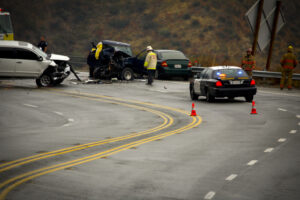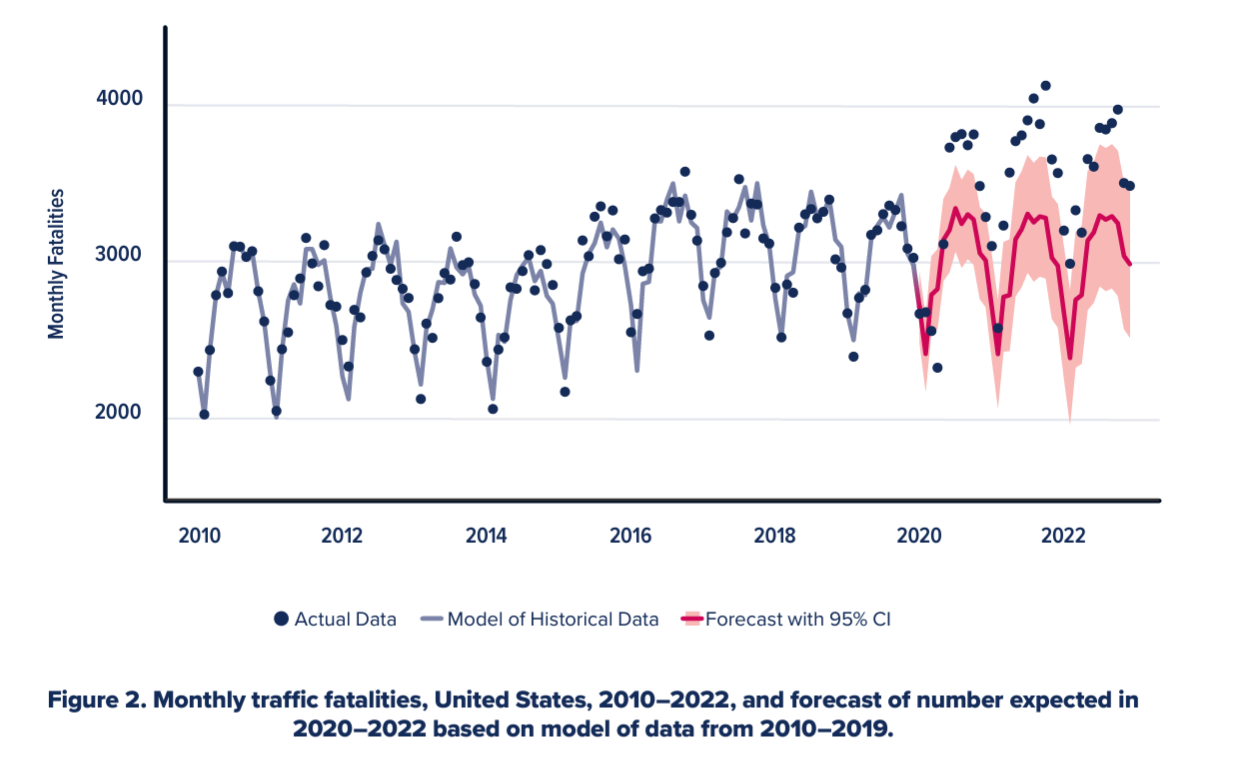
AAA research: Traffic fatality rates remain elevated, despite return to pre-pandemic traffic levels
By onAnnouncements
From May 2020 through December 2022, 114,528 people were killed in traffic crashes on U.S. roads, an estimated 16,771 (17%) more than would have been expected if the pandemic had not occurred and pre-pandemic trends continued, according to the latest data from the AAA Foundation for Traffic Safety (FTS).
The foundation’s research found that a high number of traffic fatalities involved disadvantaged populations (race, geographic location, and education level) and motorcyclists.
“After a brief reduction during the initial months of the COVID-19 pandemic, traffic fatalities in the United States surged to the highest levels in many years,” FTS wrote in its research report. “Initially experts hypothesized that the increase was due in large part to reduced traffic volumes facilitating speeding. However, traffic fatality rates remained elevated throughout 2021 and 2022, despite traffic returning to near pre-pandemic levels.”
In 2021 and 2022, traffic fatalities were more than 20% above forecasts based on pre-pandemic trends for all age groups except teens younger than 16 and adults aged 55 and older.
Adults aged 55 years and older did not experience a statistically significant increase in fatalities relative to corresponding forecasts in any of the periods examined.
Adults ages 20-24 saw the highest number of fatalities above what was forecasted in 2020 and 2022.
In 2020, the increase in fatal crash involvement was almost entirely among men.
In 2021, the increase was greatest among teens ages 16–19. During the same year, fatal crashes involving men and women increased significantly; however, the increase was still much larger among men.
In 2022, the number of fatal crashes involving men was again much greater than the corresponding forecast while the increase among women was also substantially larger than the corresponding forecast, the difference wasn’t statistically significant.
The number of fatal crashes that involved drivers who never had a driver’s license exceeded forecasts by 38-53% in all three periods. Increases in fatal crash involvements were far larger on a percentage basis for drivers without valid licenses, which accounted for the majority of the numeric increase in fatal crashes both years.
The increase in vehicle occupant fatalities was almost entirely among passengers who weren’t wearing seatbelts. Speeding that contributed to fatal crashes exceeded forecasts by 24-28% in all three years. Increases in fatal crashes relative to forecasts were largest in percentage for drivers with blood alcohol concentration at or above the legal limit.
“Although total vehicle miles of travel in the U.S. fell to levels as low as 39% below pre-pandemic levels in April 2020, they had returned to within 2% of pre-pandemic levels by 2022 (Federal Highway Administration, 2024) yet the current study estimates that there were still 18% more fatalities in 2022 than would have occurred without the pandemic,” the report states. “Furthermore, the current study finds that the largest increases in traffic fatalities occurred during the late night and early morning hours [10 p.m.-2 a.m.] — times during which speeding generally would not have been precluded by congestion even before the pandemic.”
AAA FTS concluded that while certain fatalities weren’t attributable to the pandemic, they could have been anticipated based on pre-pandemic trends.
“This suggests that more holistic and more general approaches to traffic safety (i.e., not focused specifically on identifying and reversing what transpired specifically due to or during the pandemic) will be necessary to address these trends, whose contributions to the overall increase in traffic fatalities in recent years have been substantial,” the report states. “The framework of the Safe System Approach can help to address these adverse trends in traffic safety.”
The U.S. Department of Transportation’s “Safe System Approach” corresponds with its “National Roadway Safety Strategy (NRSS)” which focuses on five objectives — safer people, safer roads, safer vehicles, safer speeds, and post-crash care.
The approach seeks to:
-
- Prioritize the elimination of crashes that result in death and serious injuries.
- Make human-centric transportation system design and operation improvements to accommodate certain human mistakes and physical vulnerabilities to avoid death and serious injuries when a crash occurs.
- Use proactive tools to identify and address safety issues in the transportation system.
- Reduce risks by strengthening all parts of the transportation system so that if one part fails, the others still protect people.
Images
Featured image credit: Eyecrave Productions/iStock

